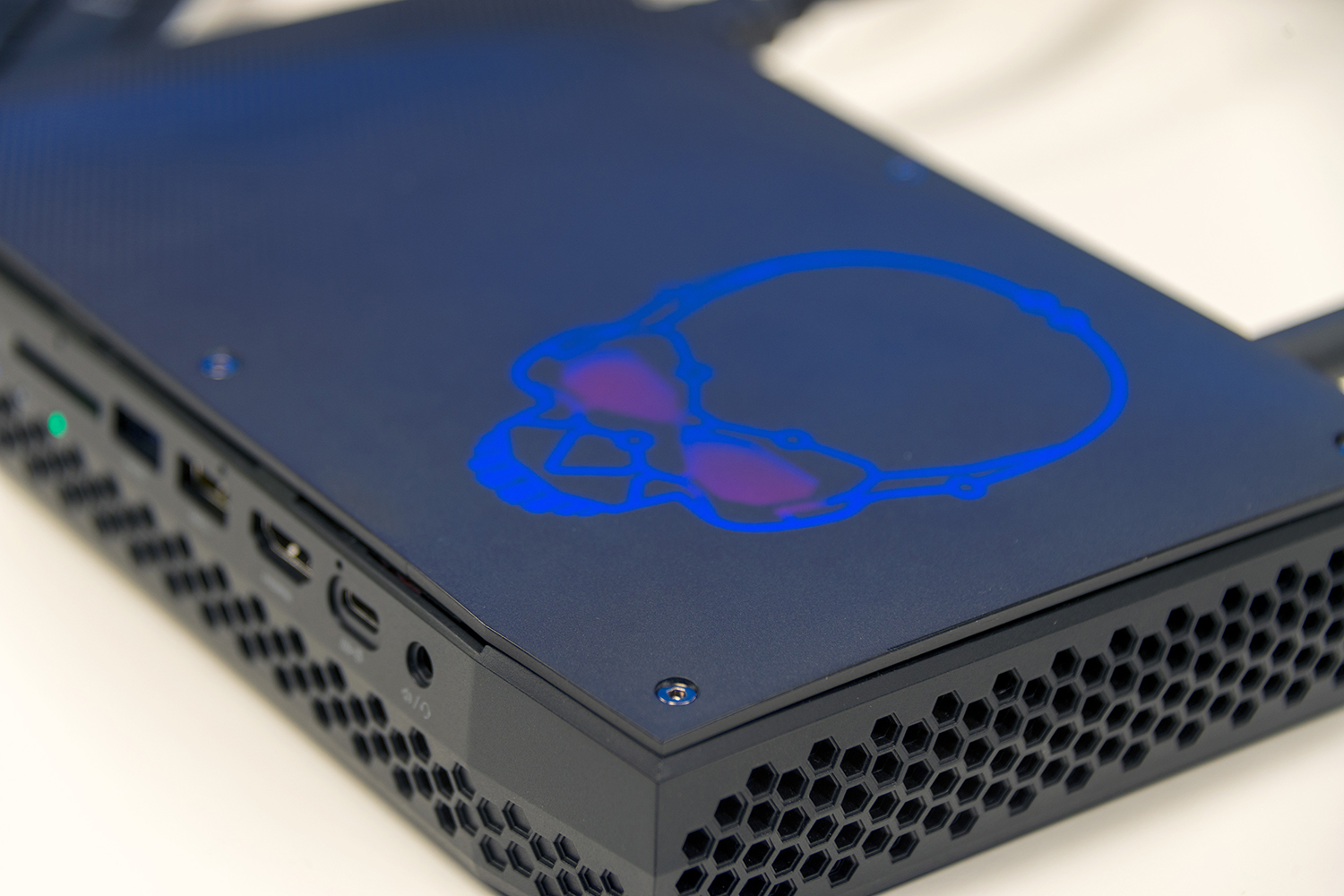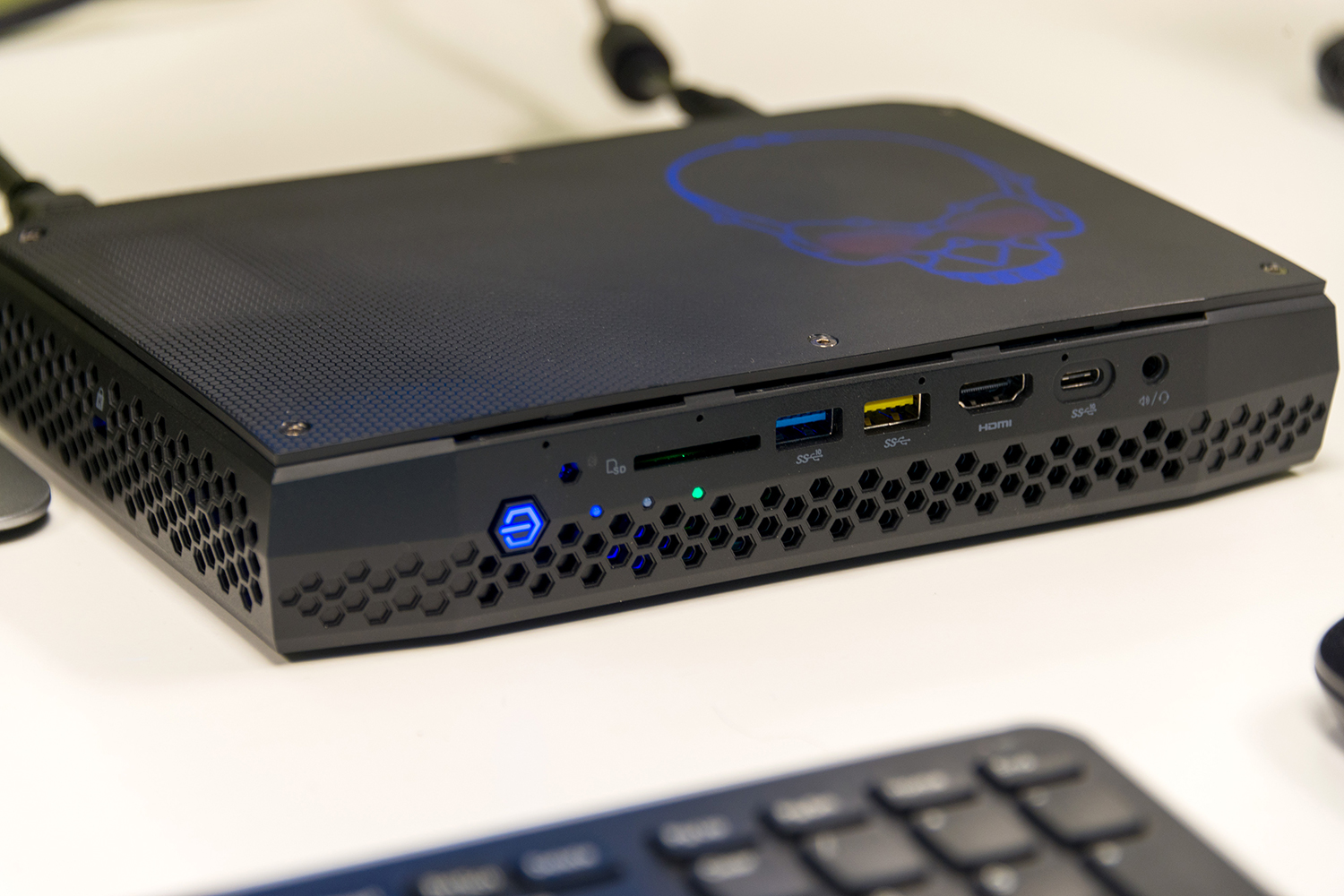
Intel’s NUCs are something of a niche product. If you’re unfamiliar, they’re really just very small PCs. They typically have the kind of horsepower you’d expect out of an entry-level or mid-range laptop, just enough to get you through the a workday, or maybe serve as a media center tucked safely away behind your TV. In other words, they’re usually pretty unremarkable. Usually. Intel’s Hades Canyon NUC, the latest of its kind, is a different story entirely.
I’ll be honest, I never paid much attention to the NUCs. They were products from a weird subcategory of a subcategory, and they just never got my interest. There are stick PCs that do the same thing, and products like the Apple TV, Chromecast, Roku, and Fire TV fill the media center niche pretty well. NUCs didn’t seem very noteworthy. Even when the Hades Canyon NUC came into the office, I was unimpressed. Intel’s marketing for the device promised improved gaming performance and quicker hardware, but I was skeptical. Until I spent some time with it.
This NUC is different from its predecessors in that it’s the first NUC to feature Intel’s upcoming 8th-generation processors with on board Radeon Vega graphics. That’s the marquee feature right there. It’s a CPU with on board graphics that can keep up with entry-level and mid-range PC hardware.

During our tests, the NUC hit an average of 49 FPS in Battlefield 1 on Ultra settings at 1440p. That’s kind of unbelievable. This tiny little thing without a stand-alone graphics card outperformed some full-sized desktop graphics cards. That means this Intel chip with Radeon graphics can provide performance on par with an Nvidia GeForce GTX 1050 Ti, and comes really close to the performance we’ve seen out of our GTX 1060.
What does that mean for PC gaming? Well, we don’t really know for sure — and that’s the exciting part. If this processor in this miniature system can perform as well as it does without a discrete graphics card, that means gaming PCs can get a whole lot smaller.
It could lead to a lot of interesting innovations into a gaming PC market that really needs some. For instance, your gaming rig could become something you can toss in a messenger bag and take to work, or a friend’s house, or on a business trip. One thing’s for sure though, the implications of the Hades Canyon NUC are going to turn a lot of heads — and might even ruffle a few feathers.
Editors' Recommendations
- We finally know the price of Asus’ most powerful gaming NUC
- This Intel gaming handheld could give the Steam Deck a run for its money
- How Intel could use AI to tackle a massive issue in PC gaming
- Intel’s A770 GPU outperforms the RTX 4090 in one key way
- Intel and CLX somehow stuffed two PCs inside a single case


